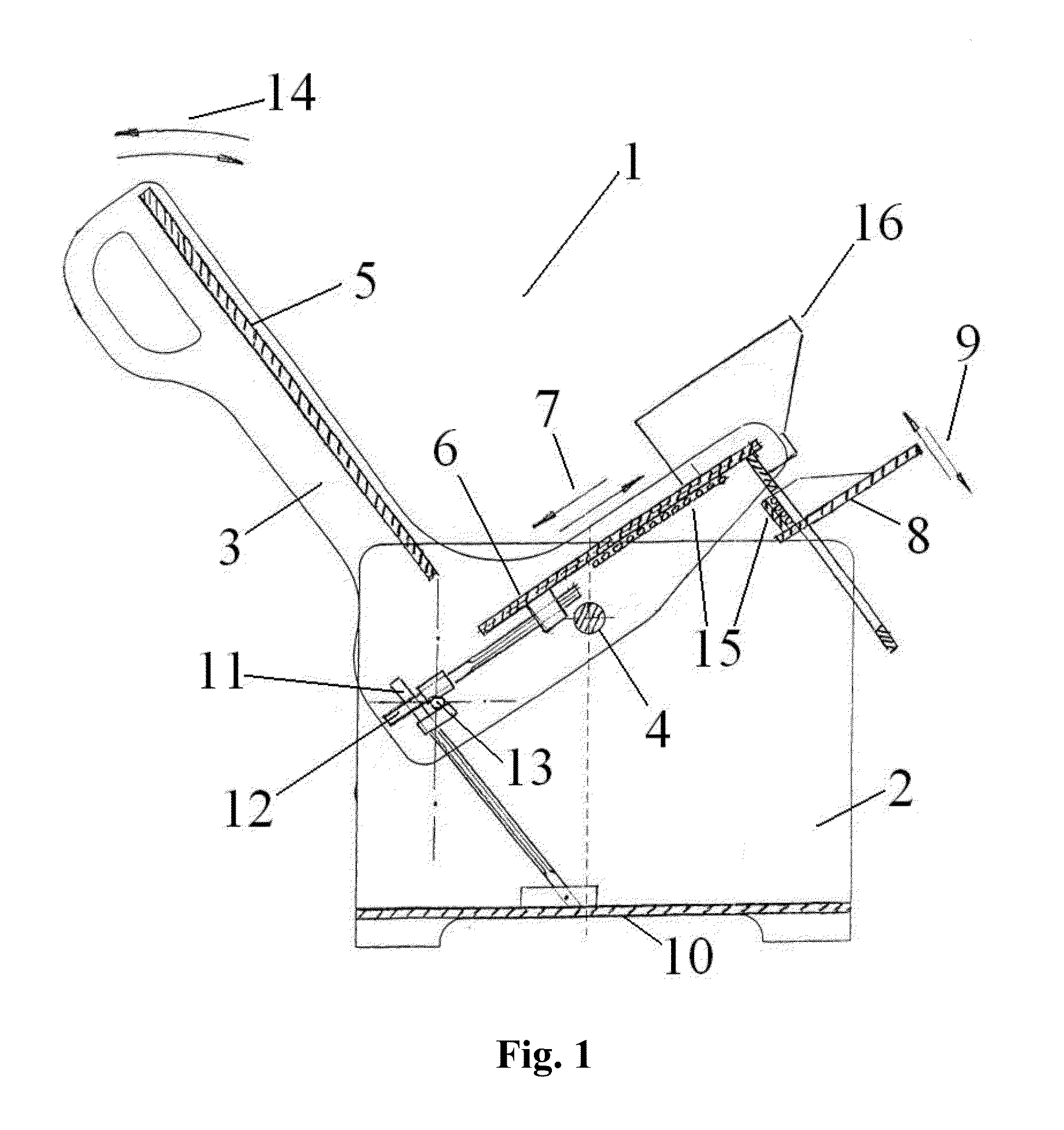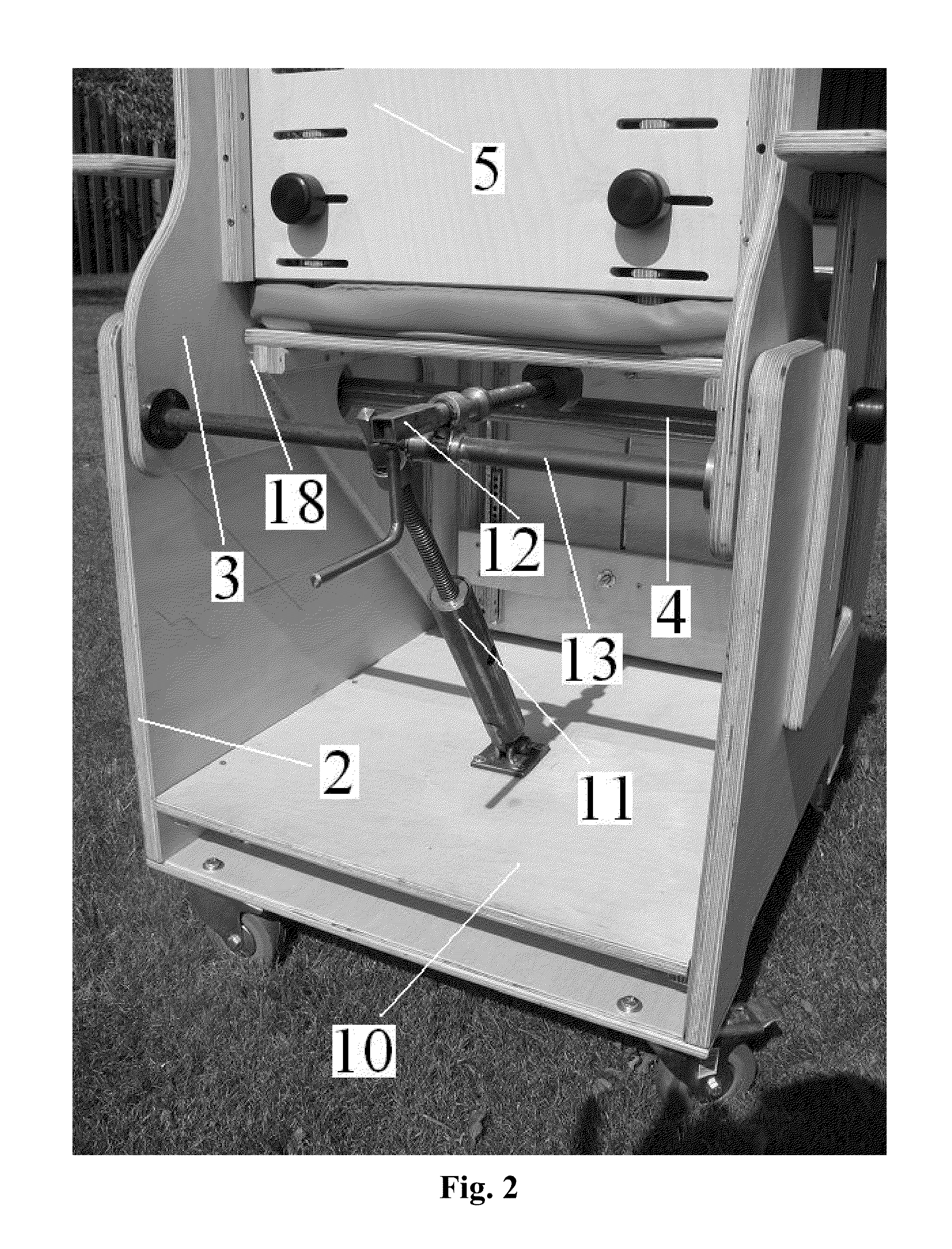Special work and rest chair, intended to be used for people (especially for children) with locomotor disability, particularly in case of cerebral paralysis (PALSY)
a special work and rest chair technology, applied in the field of chairs, can solve problems such as reducing construction efficiency, and achieve the effects of convenient manufacture, smooth and precise adjustment of chair position, and well-operated
- Summary
- Abstract
- Description
- Claims
- Application Information
AI Technical Summary
Benefits of technology
Problems solved by technology
Method used
Image
Examples
Embodiment Construction
[0013]As it is known, there are many chairs of various types currently created in the world that are intended for people with locomotor disabilities. Normally, the type of a chair construction depends on the type / group / subgroup of disability the person has. Due to the variety of the disabilities, the chairs are not always comfortable and do not always suit the needs of the persons in the constructional aspect. Moreover, the chairs are usually made of plastic, metal or unnatural substances.
[0014]The aim of this invention is to create a comfortable, pleasant to the eye and body / skin, mobile, inexpensive, well-operated and easily manufactured chair, intended for children with locomotor disabilities, especially in case of cerebral paralysis and the other above mentioned cases. One of the aspects of this invention is that plenty of the elements of this chair are made of natural wood, therefore it is easy to take care of this chair as well as it is pleasant to touch it. Furthermore, the c...
PUM
 Login to View More
Login to View More Abstract
Description
Claims
Application Information
 Login to View More
Login to View More - R&D
- Intellectual Property
- Life Sciences
- Materials
- Tech Scout
- Unparalleled Data Quality
- Higher Quality Content
- 60% Fewer Hallucinations
Browse by: Latest US Patents, China's latest patents, Technical Efficacy Thesaurus, Application Domain, Technology Topic, Popular Technical Reports.
© 2025 PatSnap. All rights reserved.Legal|Privacy policy|Modern Slavery Act Transparency Statement|Sitemap|About US| Contact US: help@patsnap.com



